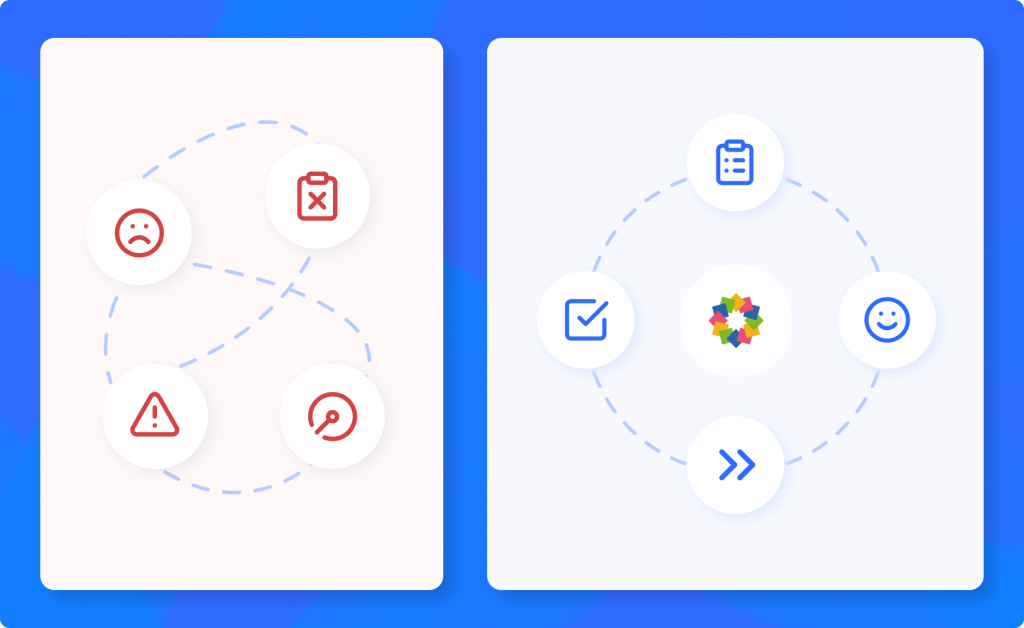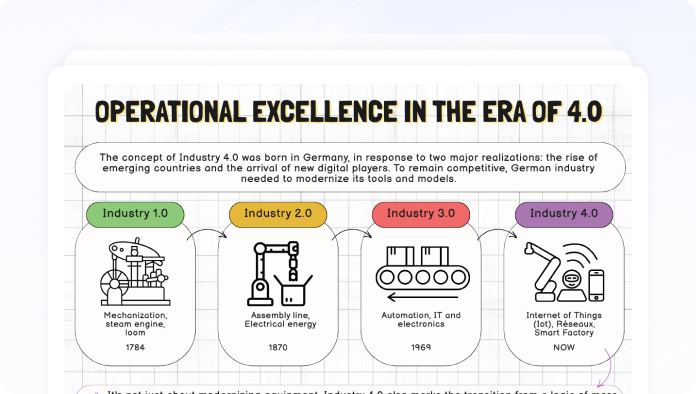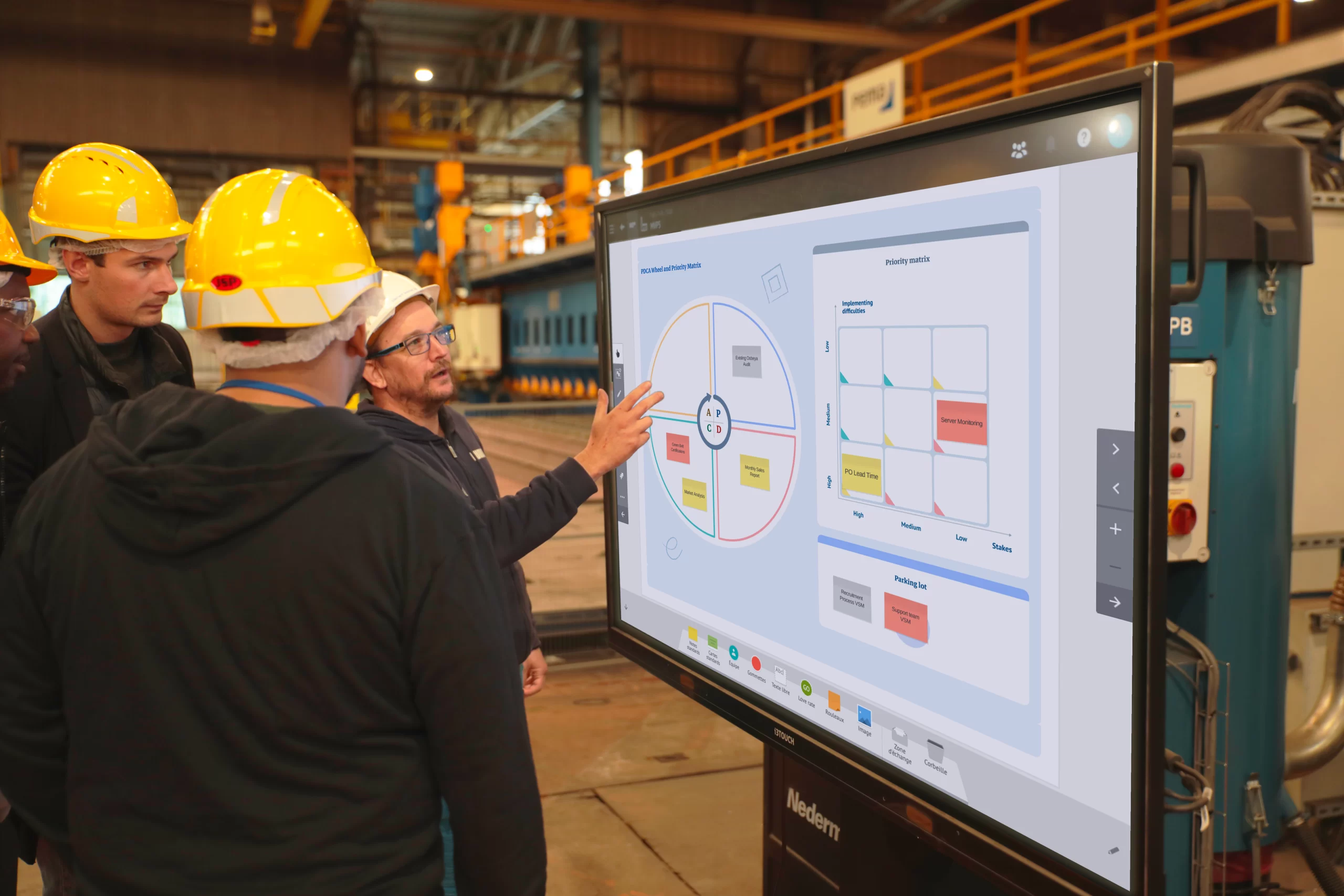Hey, let’s start your
iObeya journey!
How real-time visibility speeds up decision-making
In the world of operational excellence, one truth is universally acknowledged: decisions are only as good as the data behind them and as fast as the systems that support them. Yet many organizations continue to struggle with delays in decision-making, often flying blind in environments that demand speed, precision, and agility.
If your teams are constantly reacting late to problems, you’re not alone. The root cause, more often than not, is a lack of real-time visibility into what’s actually happening on the ground. This delay in information flow constrains how well you can respond to emerging problems which in turn can make the problems bigger.
This blog post explores how Short Interval Management (SIM) and Visual Management combine to solve these challenges and accelerate smart decision-making.
Slow Decision-Making Is a Symptom of Poor Visibility
When Driving a Car at Night Without Lights, You Slow Down
Let’s start with a typical scenario: a frontline team faces a spike in production issues, but no one notices until the end of the day; or worse, until customer complaints roll in. Managers scramble to analyze scattered reports, and root causes remain buried in disconnected conversations or outdated spreadsheets.
This lack of timely insights leads to productivity loss. When driving a car you need to have good visibility of your environment and your system in order to drive at an increased speed. The lower the visibility, the lower the speed.
This delay isn’t just frustrating; it’s costly as it reduces production capacity. Slower decisions, missed opportunities, and eroded trust in the system as a whole.
Slow decision-making is often a symptom of deeper issues: outdated data, lack of standardized reporting, and scattered information. Without real-time visibility, issues go unnoticed until they become critical. Teams stay reactive, not proactive.
Short Interval Management: Accelerating decisions with Lean operating Rhythm
Short Interval Management (SIM) is a Lean practice designed to bring structure and speed to daily operations. At its core, SIM consists of regular (often daily) team huddles that focus on reviewing recent performance, identifying issues, and aligning on immediate priorities.
Teams are any group of people collaborating regularly towards a common objective; not just the shop floor teams, but all connected teams. Each level of the organization speaks to their appropriate indicators, creating fast feedback loops and making room for rapid, fact-based decisions.
Three key ingredients make SIM work:
- Daily Stand-Ups with Key Metrics: Every team meets at a fixed time, often for 15 minutes, to review a small set of performance indicators. The goal is to detect deviations early—not after they’ve snowballed.
- Tiered Escalation Meetings: Problems that can’t be resolved at the team level are escalated in structured meetings up the hierarchy to the next tier; ensuring that leadership gets timely visibility and can support resolution.
- Time-Boxed Cadence: SIM creates a consistent rhythm that builds discipline. It keeps teams focused and eliminates the guesswork from who needs to act, and when. The timebox creates focus and creativity.
SIM creates the structure for the conversation. To unlock its full power, it needs to be visual.
Visual Management: Making Performance Visible to Everyone
Visual Management brings the SIM routine to life by turning data into information driving action through shared, transparent displays. It helps answer a simple but powerful question: Can anyone walk up to the board and understand how things are going?
Here’s how Visual Management supports faster decisions:
- Real-Time Dashboards: Whether physical whiteboards or digital solutions like iObeya, real-time dashboards show actual vs. target metrics in a format that’s easy to digest. No more hunting for the latest spreadsheet version—everyone works from the same source of truth. All the necessary information is close to each other in the same context.
- Visual Alerts: Color-coded indicators (RAG: Red, Amber, Green) instantly visually highlight where current indicators are outside of their intended margins, showing where attention is needed. Action visuals allow team members to flag problems as they happen, supporting quick intervention.
- Universal Accessibility: Especially in hybrid or multi-site teams, digital visual boards make it possible for everyone to see the same status updates, risks, and actions. This shared awareness is foundational to aligned, decentralized decision-making at speed.

How SIM and Visual Management Helped This Team Cut Delays and Regain Control
From Firefighting to Focus: A Real-World Transformation
Before implementing SIM and Visual Management, a warehouse team relied on end-of-day reporting to catch shipment delays. Escalations were manual, and issues were often discovered too late to act. Team leads felt reactive and overwhelmed.
To adopt SIM and Visual Management the organization (not just the team) introduced :
- Daily SIM meetings at three levels (team, department, operations).
- A digital visual board was deployed, showing daily targets, shipment metrics, and open issues with color-coded status.
- Lastly, escalation protocols were defined and visualized.
Within 6 weeks after the roll-out they observed:
- 40% reduction in delayed shipments
- Average resolution time for logistics issues dropped from 36 hours to 8 hours
- Higher employee engagement due to clarity and control
Leaders reported more confidence in data quality and appreciated the ability to intervene before problems spiraled out of control.
Discover this team’s testimonial.
Discover how ID Logistics digitized their SIM and Gemba walks with iObeya.
5 Key Steps to Successfully Implement SIM and Visual Management
Here are the top five recommendations to implement Sim and Visual Management into your operations:
- Start with Daily Performance Indicators
Select three to five metrics that matter most at the operational level. Think: output, quality, lead time, or issue rate. Keep it simple and visible. Adjust as you learn. - Standardize a Simple Visual Board Layout
Whether on a whiteboard or digital tool, ensure your board includes:- KPIs (actual vs. target)
- Issue tracker with owner and status
- Visual cues (colors, icons)
- Define Your SIM Rhythm and Escalation Path
Set fixed times for daily team huddles and tiered meetings. Document what gets escalated and when. This avoids ad hoc panic escalations. - Invest in Enablement Tools
When you’re scaling across teams or sites, digital solutions like iObeya are a great enabler. - Coach the Behavior, Not Just the Tool
Visual Management and SIM are about habits, not just templates. Train facilitators to lead productive SIM sessions, ask the right questions, and drive follow-up.
Better Visibility Leads to Better Decisions
In a world where responsiveness is competitive advantage, you can’t afford to manage blind. Short Interval Management creates the rhythm. Visual Management provides the lens. Together, they allow your teams to see what matters, decide faster, and act with confidence.
Lean isn’t just about tools—it’s about systems that support people to do their best work. If you want to move from chaos to clarity, start by making performance visible. That’s how you turn decisions from slow and reactive into fast and strategic.







